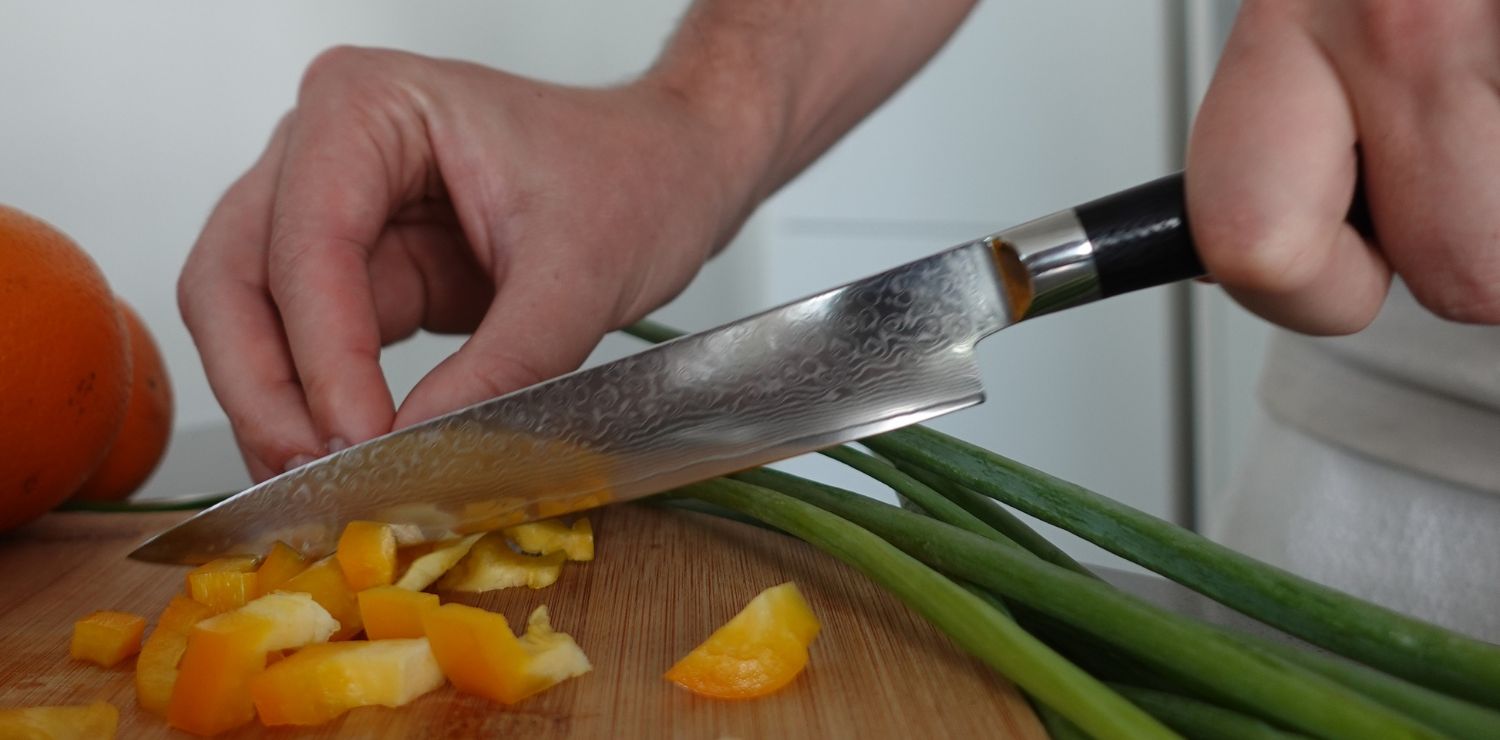The art of cooking requires efficient and precise tools. Among the essentials, we can count the utility knife , which is characterized by its versatility and practicality. Whether for amateur or professional use, This tool deserves a special place in your kitchen. In this blog post, we will explore all the reasons why having a utility knife is essential in your kitchen, and why it would be wise to invest in a Japanese utility knife.
The Versatility of the Utility Knife
The utility knife is generally considered to be a do-it-all knife in the kitchen. Larger than a paring knife , but smaller than a chef's knife, making it ideal for a multitude of tasks. Here are some of the most common uses:
-
Peeling and cutting vegetables:
With its intermediate size, the utility knife is perfect for peeling and cutting vegetables with precision. It is relatively handy for small jobs but is robust enough to carry out more demanding tasks.
-
Cutting the meat:
Whether slicing raw or cooked meat, the utility knife offers exceptional precision. Its blade is very thin, allowing you to make clean cuts without tearing the flesh.
-
Fruit bowl:
For medium-sized fruits such as apples, pears, or citrus fruits, the utility knife is a perfect tool. It allows you to peel, slice, and cut fruits into pieces with ease.
The Benefits of the Utility Knife
Beyond its versatility, the utility knife has several advantages that make it essential in the kitchen:
-
Handling:
-
Precision :
The blade of the utility knife is generally thinner than the blade of a chef's knife, which allows for more precise cuts. This characteristic is relatively useful for delicate work such as making thin slices for fruits and vegetables.
-
Ease of maintenance:
Utility knives are very often made of stainless steel, which makes them resistant to corrosion. This also makes them easy to maintain. Regular sharpening keeps the blade in excellent condition, ensuring optimum performance.
Why choose a Japanese knife?
Among the many options available in the market, the Japanese knife stands out for its exceptional quality and unique features. Here’s why you should consider opting for a Japanese knife to add to your kitchen utensil collection:
-
Blade quality :
-
Ergonomic design :
-
Aesthetics and tradition :
Japanese knives are high-performance tools and art objects. Each knife is carefully crafted, often using traditional, age-old methods passed down through generations. Owning a Japanese knife also means owning a unique piece of craftsmanship.
Comparison between the utility knife and other kitchen knives
Understanding the differences between the utility knife and other kitchen knives is essential to fully appreciate its value. Here is a brief comparison:
-
Chef's knife:
-
Paring knife :
The paring knife is smaller and lighter than the utility knife. It is perfect for peeling and cutting small fruits and vegetables. However, it lacks versatility for heavier tasks that the utility knife can handle without a problem.
-
Bread knife :
The bread knife has a serrated blade, ideal for slicing breads and pastries without crushing them. Unlike the utility knife, it is not designed for precise or all-purpose cuts.
How to choose the right utility knife?
Choosing the right utility knife depends on several factors, including your specific needs and budget. Here are some tips to help you make the best choice:
-
Blade material:
-
Ergonomics:
Make sure the knife has a comfortable grip. Good ergonomics are essential to reduce fatigue and improve accuracy.
Conclusion
A utility knife is a valuable addition to any kitchen. Its versatility, maneuverability, and precision make it an indispensable tool for many culinary tasks. By choosing a Japanese knife, you not only benefit from the exceptional performance of Japanese steel, as well as the artisanal heritage and unique aesthetics of Japanese knives.
Whether you're a home cook or a professional chef, a quality utility knife can transform your cooking experience, making every task easier and more enjoyable. Investing in a good utility knife is an investment in your enjoyment and efficiency in the kitchen.







Comparison between French Culture and Japanese Culture
Summer Vacation in Japan: A Rich Summer Trip